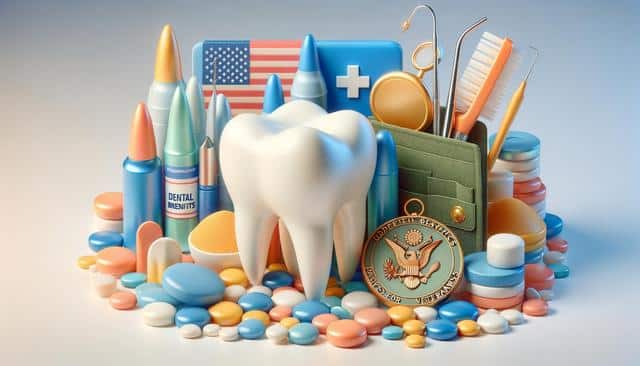
A Comprehensive Guide to Dental Benefits for Veterans
Understanding Dental Coverage Options for Veterans
Veterans have access to a range of dental care options, but eligibility and coverage levels can vary greatly depending on service history, disability status, and other factors. Unlike medical benefits, dental benefits through the Department of Veterans Affairs (VA) are not automatically available to all veterans. Therefore, it is important to understand the different types of coverage offered and how they apply to your unique circumstances.
The VA offers dental services through its own medical centers and clinics, as well as through contracted providers. However, to qualify for comprehensive dental care, veterans usually need to meet specific criteria. These include having a service-connected dental disability, being a former prisoner of war, or being rated 100% disabled due to a service-connected condition. In some cases, participation in specific VA rehabilitation programs may also make veterans eligible for dental benefits.
For those who do not qualify for full dental coverage, there are other options. The VA Dental Insurance Program (VADIP) allows eligible veterans to purchase private dental insurance at a reduced cost. This program can be a valuable resource for maintaining oral health when full VA dental care isn’t available.
Who Is Eligible for VA Dental Benefits?
Eligibility for VA dental benefits is determined by several factors, many of which relate to a veteran’s service-connected conditions or circumstances. Understanding these eligibility categories helps veterans identify which benefits they may access and avoid unnecessary confusion or missed opportunities.
Veterans may qualify for dental benefits if they:
- Have a service-connected dental condition or injury
- Are 100% disabled due to a service-connected disability
- Are a former prisoner of war
- Are receiving inpatient care or are enrolled in a VA vocational rehabilitation program
It’s also worth noting that some veterans may be eligible for one-time dental care if they apply for it within 180 days of discharge and meet certain conditions. For example, they must have served on active duty for at least 90 days and have their DD214 certificate indicating they did not receive a complete dental exam and treatment before discharge.
Even if you do not meet the criteria for full VA dental benefits, exploring VADIP or other low-cost dental programs for veterans might still provide access to essential care.
Navigating the VA Dental Insurance Program (VADIP)
The VA Dental Insurance Program, commonly referred to as VADIP, offers an alternative route for veterans who are not eligible for comprehensive VA dental care. This program partners with private dental insurance providers to offer coverage at competitive rates. While it is not a free benefit, VADIP can make preventive and routine dental care more accessible and affordable.
VADIP is available to:
- Veterans enrolled in VA health care
- CHAMPVA beneficiaries (spouses and children of veterans who are permanently and totally disabled or who died from a service-connected disability)
Enrollees pay a monthly premium and are also responsible for any copays or deductibles defined by the insurance plan they choose. Coverage typically includes preventive services such as cleanings and exams, basic restorative services like fillings, and more extensive procedures such as crowns and root canals, depending on the specific plan selected.
Enrollment in VADIP is voluntary, and veterans can compare available plans to determine which option aligns best with their dental care needs and budget. This flexibility allows many veterans to maintain their oral health without relying solely on the limited full-care options available through the VA.
How to Apply for Dental Benefits
Applying for VA dental benefits or enrolling in VADIP involves a few simple steps, but it’s essential to understand the requirements and documentation needed to help streamline the process. Whether you’re seeking comprehensive VA dental care or enrolling in a VADIP plan, being prepared can reduce delays and ensure better access to care.
To apply for VA dental benefits:
- Start by enrolling in the VA health care system if you haven’t already
- Visit the VA website or your local VA medical center to determine your eligibility
- Complete VA Form 10-10EZ (Application for Health Benefits) if required
For those interested in VADIP:
- Review the list of participating dental insurance providers through the VA website
- Compare plan details, including monthly premiums, covered services, and provider networks
- Enroll directly through the provider’s website or by phone
Keeping your military records, such as your DD214, readily available will help verify your status and expedite the application process. If you have questions about your eligibility or need assistance, VA representatives and veteran service organizations are available to help guide you through the process.
Making the Most of Your Dental Benefits
Once enrolled in a VA dental program or VADIP, making the most of your benefits ensures you receive the oral care you need while maximizing the value of your coverage. Proper dental care not only improves oral health but also contributes significantly to overall wellness.
Here are some tips to help you utilize your dental benefits effectively:
- Schedule regular check-ups and cleanings to prevent more serious issues
- Understand your coverage details, including copayments and annual limits
- Choose in-network providers to minimize out-of-pocket expenses
- Maintain good oral hygiene habits between visits
If you have unique dental needs, such as dentures or oral surgery, speak with your provider about how these services are covered under your plan. In some cases, additional documentation or pre-authorization may be required. Staying informed and proactive can help you avoid surprises and ensure continuous access to the care you need.
For veterans living in rural or underserved areas, the VA also offers tele-dentistry services in certain locations, allowing for consultations and follow-ups without long-distance travel. Exploring these options can be particularly beneficial for maintaining consistent care.
Conclusion: Supporting Veterans Through Accessible Dental Care
Dental health plays a crucial role in overall well-being, and for veterans, understanding how to access and use available benefits is key. While not all veterans qualify for full dental care through the VA, programs like VADIP provide valuable alternatives to help maintain oral health. By learning about eligibility, exploring insurance options, and taking advantage of available resources, veterans can make informed decisions that support their health and quality of life. Whether you’re newly discharged or a long-time veteran, staying informed about your dental benefits ensures you receive the care you deserve.


